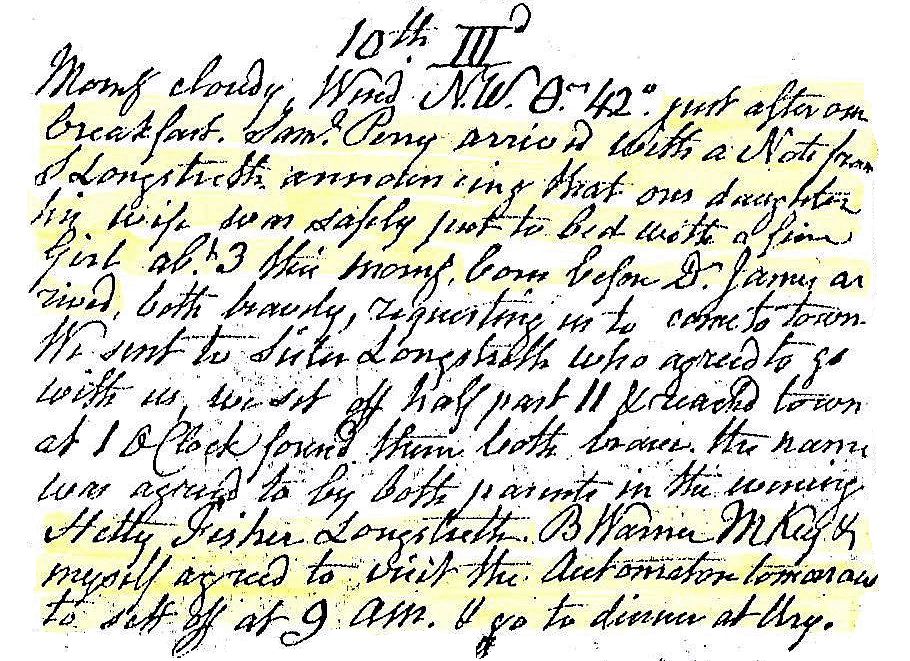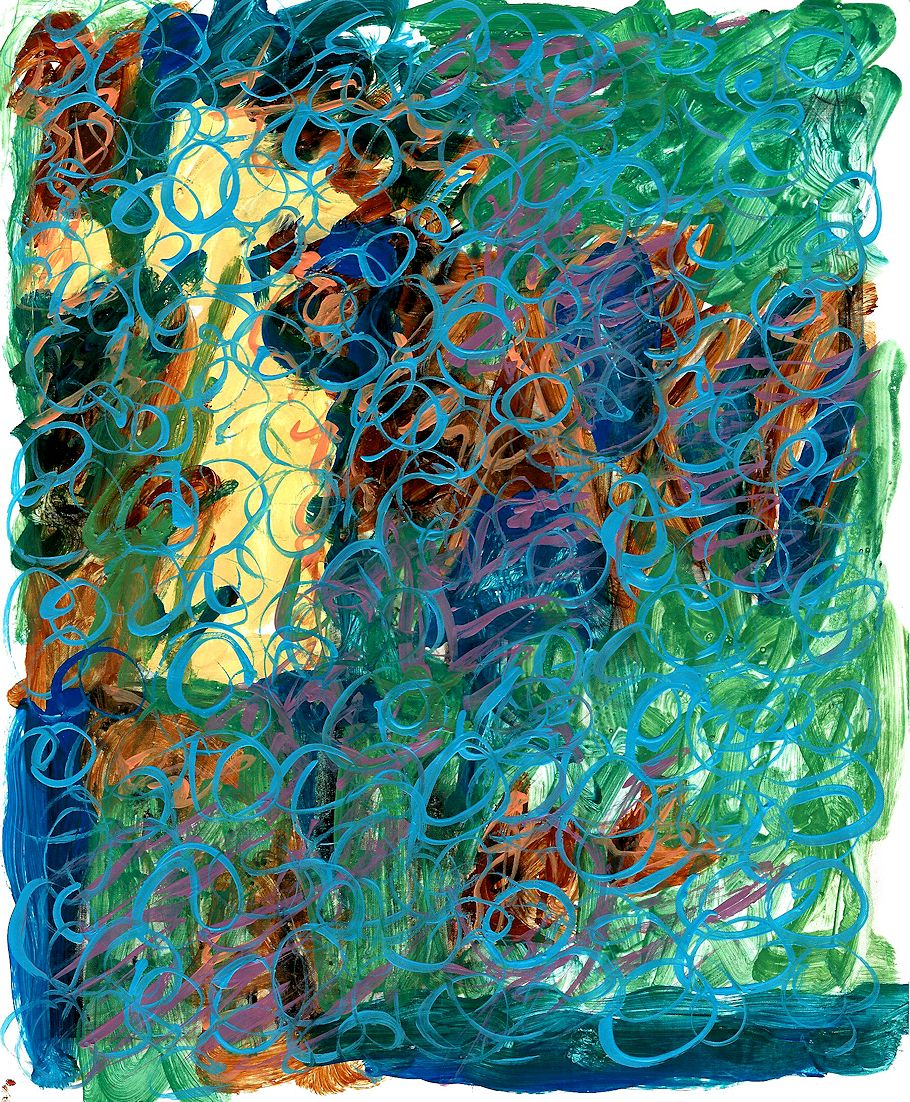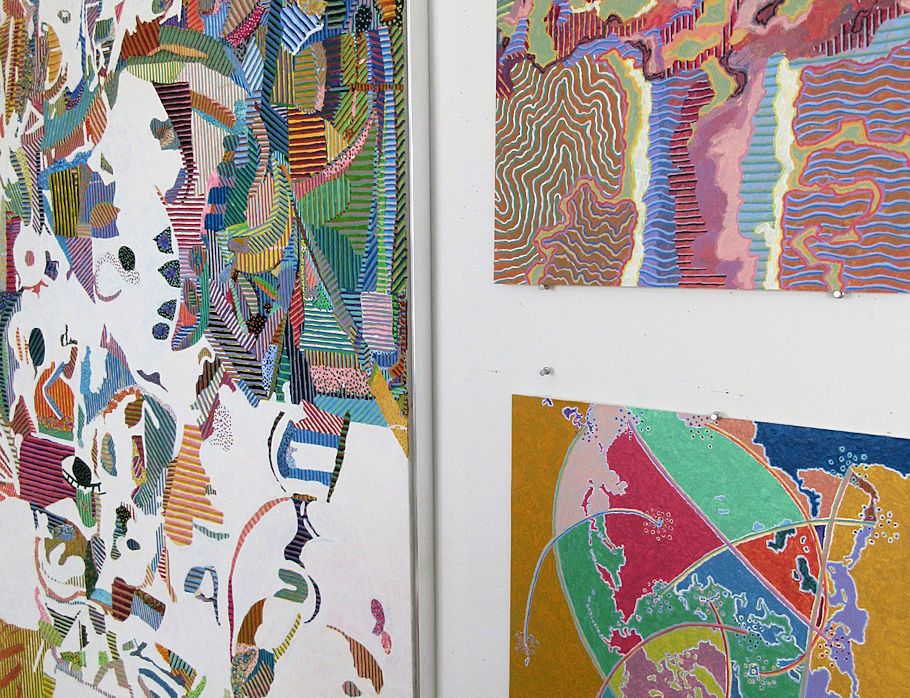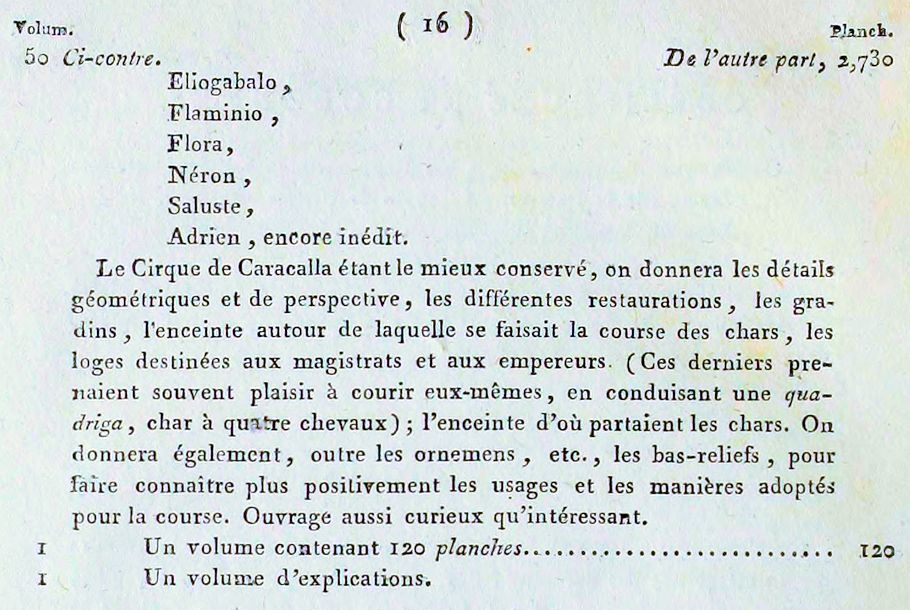10 November 1777
"Late in 1777 or in the spring of the following year, he [Piranesi] set off for Naples, accompanied by Francesco, by his veteran assistant Benedetto Mori, and by Augusto Rosa, an unsuccessful architect who made a precarious living from the sale of cork models of antiquities. It was a tiring journey that would have taken three or four days and when they arrived he turned down Francesco's suggestion that he ought to take a rest; they pressed on south to Paestum and immediately set to work sketching the ruins."
Jonathan Scott, Piranesi (London: Academy Editions, 1975), p. 251.
"Although the evidence is meagre it would appear that Piranesi, accompanied by Francesco and their architectural assistant, Benedetto Mori, made an expedition in 1777-78 to examine these Greek temples situated a few miles south of Naples."
John Wilton-Ely, The Mind and Art of Giovanni Battista Piranesi (London: Thames and Hudson, 1978), p. 117.
"Legrand, Piranesi's first biographer, alludes to the long and uncomfortable journey as one of the causes of his death... In reality, things didn't have to unfold so linearly. We do not know when the journey took place, nor how long it lasted: a few weeks in the second part of 1777 seems the most probable period. At least until August 1777 Piranesi is in fact documented...in Rome, engaged in his activities, more and more multiform and feverish. Rosa is then already back in Rome in the same year: a cork model of the temple of Hera II is signed and dated 1777. In the first months of 1778 Piranesi is certainly in the city, and he certainly works intensely on the engravings of Paestum. On 27 March he wrote the long and famous letter to one of the sisters in Venice..."
Mario Bevilacqua, "Piranesi 1778. Ricerche interrotte, opere perdute" in V. Cazzato, S. Roberto, M. Bevilacqua (a cura di), Il teatro delle arti. Saggi in onore di Marcello Fagiolo per 50 anni di studi, II, Roma, Gangemi 2014, p. 792.
10 November 1778
Piranesi "was buried not, as he had intended, in the church of S. Maria degli Angeli in the Baths of Diocletian, but in his parish church of S. Andrea delle Fratte."
Jonathan Scott, Piranesi (London: Academy Editions, 1975), p. 254.
"Piranesi died...after heroic resistance to a particularly painful illness aggravated by his dedicated activities. His body was first interred in his local church, S. Andrea delle Fratte..."
John Wilton-Ely, The Mind and Art of Giovanni Battista Piranesi (London: Thames and Hudson, 1978), p. 119.
"Laura's dowry...was completed four days after her father's death..."
Heather Hyde Minor, Piranesi's Lost Words (2015), p. 189.
10 November 1812 Tuesday

Morning cloudy. ... Just after our breakfast Samuel Perry arrived with a note from S. Longstreth announcing that our daughter his wife was safely put to bed with a fine girl about 3 this morning, born before Dr. James arrived, both bravely[?], requesting us to come to town. We sent to sister Longstreth who agreed to go with us. We set off half past 11 and reached town at 1 o'clock. Found them both ...... The name was agreed to by both parents in the evening Hetty Fisher Longstreth. Benjamin Warner, Marshall Key and myself agree to visit the Atomaton tomorrow, to set off at 9 AM and go to dinner at Ury.
10 November 2005
It rocked Eisenman in his chair...
My opinion of Bloomer's book, as far as it relates specifically to reading Piranesi's Ichnographia of the Campo Marzio, is that it is indeed wrong and [somewhat] trite--almost all of what Bloomer writes about the Ichnographia is taken virtually verbatim from Tafuri; she does, however, include some original material relative to the "pit of the underworld" citing it as the entry way into understanding the Ichnographia as a labyrinth, but she misses the real key to the large plan (the tiny intercourse building) which is directly across the Tiber from the pit. Bloomer's book may be fun, but it is not good scholarship in that she really did not come to read and understand the whole plan at all--she went on to seek meaning "underneath" the plan while what she really did was avoid the actual plan itself. Can you honestly say that you now know what the Ichnographia is about after reading Bloomer's book?
It rocked Eisenman in his chair...
To be honest, I care very little about what Bloomer wrote or how she intellectually operates. What I do care about is what Piranesi delineated via the two versions of the Ichnographia of Il Campo Marzio.... All I have ever done is analyze the Ichnographia itself, which is exactly what virtually all other contemporary writers on the Ichnographia have not done! I have never been interested in spreading some current/trendy intellectual "thought" by trope-ing Piranesi and the Ichnographia, a course of action begun by Tafuri. What I am interested in is to find out what Piranesi did himself.
10 November 2018

page painting 024
10 November 2020

10 November 2022 Thursday
A House of Ury, too Masque
Just received my Piranesi inheritance. It's not like a winning lottery ticket, but it is something. It says, "You, Stephen Lauf, are to finish Piranesi's final project, Ancient Circuses, anyway you please." Well, I certainly like that last part, so here's the beginning:

Probably due to some completely innocent error, the Circus Domitian/Circus Agonalis/Piazza Navona is missing from this list, thus now added. Also added, the Circus Martius and the Circus Domitiae, if only as Piranesi's most fictitious circus renditions. Further changing the list, Circus Elagabalus may henceforth also be referred to as Circus Transgender, because Elagabalus openly expressed his desire to go trans, and the Circus Caracalla is now simply Caracalla Maxentius. And, to finish the list, all the immediate yet short-lived Eutropia, Constantine and Helena Roman Christian graveyard-circus donations.

Curious and intersting work, indeed.
|




